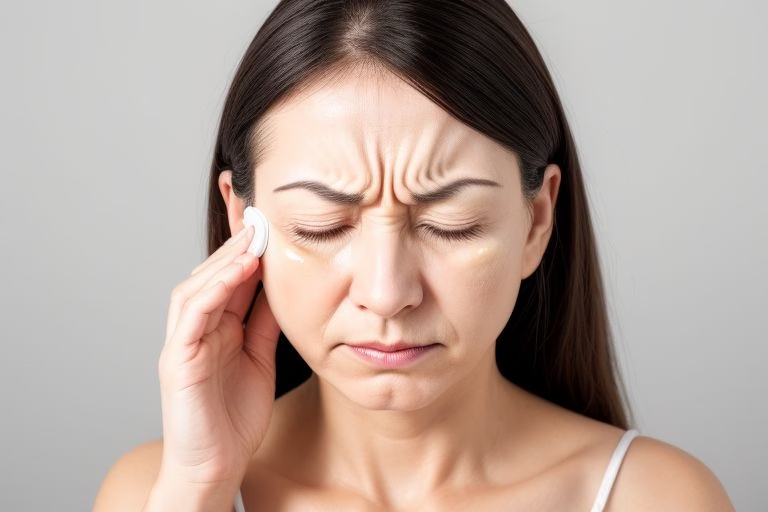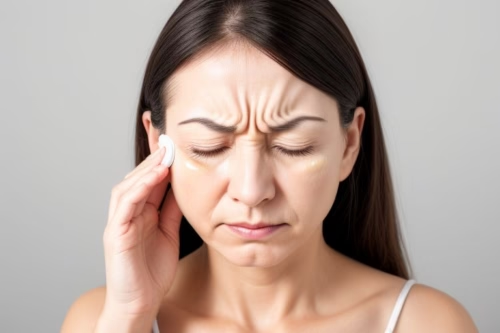
Sinus congestion, pain, and pressure can seriously disrupt your day-to-day life. Many are on the constant lookout for a sinus pressure relief solution that doesn’t rely on harsh chemicals or medications. If you’ve ever wondered how pressure points to relieve sinuses might offer a natural remedy, you’re in the right place. In this comprehensive guide, we’ll dive deep into how you can leverage acupressure techniques and traditional knowledge to alleviate sinus discomfort, boost your wellbeing, and ultimately improve your quality of life. Read on to discover the secrets of ancient healing that are now backed by modern insights.

Understanding Sinus Pressure and Its Causes
Sinus pressure arises when the tissue lining your sinuses becomes inflamed. This inflammation can be due to a variety of causes such as allergies, infections, colds, or even environmental irritants. The symptoms of sinus congestion, headache, and facial pain can be persistent and debilitating.
Modern medicine offers several treatments including decongestants, antihistamines, and sometimes even antibiotics. However, many people are now turning to natural methods to reduce their reliance on medications. Pressure points to relieve sinuses provide a holistic, drug-free approach that taps into the body’s innate healing capabilities.
For further reading on the causes of sinus pressure and traditional treatment methods, check out WebMD’s guide on sinusitis and Healthline’s comprehensive article on sinus relief.
What Are Pressure Points to Relieve Sinuses?
Pressure points to relieve sinuses refer to specific areas on your body where gentle, yet firm pressure can trigger a release of tension and improve blood circulation. This ancient technique, also known as acupressure, originates from traditional Chinese medicine (TCM) and has been used for centuries to treat various ailments.
The concept behind acupressure is that energy flows through meridians in the body. When these pathways become blocked or unbalanced, discomfort ensues. By applying pressure to these critical points, you can help restore balance and alleviate symptoms associated with sinus issues.
This method is not just limited to sinus relief—it’s a versatile approach that can be applied to many areas of pain and stress relief. For a broader look into the theory behind acupressure, you might explore this Acupuncture Today article which offers insights into the traditional methods that underpin modern acupressure practices.
Key Pressure Points for Sinus Relief
The LI4 (Hegu) Point
One of the most renowned points in acupressure is the LI4 (Hegu) point. Located on the hand, between the thumb and index finger, this point is widely used to alleviate various types of pain, including sinus pressure. Here’s how to locate and stimulate LI4:
- Locate the Point: Use your opposite hand to find the webbing between your thumb and index finger.
- Apply Pressure: Use your thumb or index finger to press firmly, massaging in circular motions for about 2–3 minutes.
- Repeat: Alternate between hands for a balanced approach.
Numerous studies have highlighted the effectiveness of the LI4 point in reducing facial pain and headache symptoms. For more detailed instructions, visit Healthline’s acupressure guide.
The Yin Tang Point
Often called the “third eye” point, the Yin Tang point is located in the middle of the forehead, between the eyebrows. This point is believed to calm the mind and relieve tension, thereby reducing sinus-related discomfort.
- Find the Spot: Center your attention between your eyebrows.
- Apply Gentle Pressure: Use your index finger to press gently in a circular motion.
- Relax: Allow your mind to focus on the sensation, promoting relaxation and relief.
The Yin Tang point not only alleviates sinus pressure but also contributes to overall mental clarity. Learn more about the benefits of this point at WebMD’s guide on acupressure.
The ST3 (Juliao) Point
The ST3 (Juliao) point is situated near the base of the nose, just below the orbital bone. It’s particularly effective for reducing congestion and easing sinus pressure.
- Locate the Point: Look just below your cheekbone, adjacent to the nostril.
- Gentle Pressure: Apply light pressure using your fingertip. A gentle massage for about 1-2 minutes on each side of the face can work wonders.
- Breathing Technique: Combine this with deep breathing to enhance the therapeutic effects.
This point can significantly help when you’re battling sinus congestion, and for an in-depth look at facial acupressure, consider reading more on Acupuncture Today.
The GB20 (Fengchi) Point
Another critical area is the GB20 (Fengchi) point, located at the base of the skull in the hollows on both sides of the neck. This point is essential for relieving not only sinus pressure but also for reducing headaches and neck tension.
- Identify the Spot: Feel the indentations on either side of your neck, just below the skull.
- Apply Pressure: Use your thumbs to apply moderate pressure, massaging in slow circular motions.
- Duration: Maintain pressure for 2–3 minutes to maximize the benefits.
This technique not only targets sinus congestion but also helps in overall stress reduction. For further reading, visit Healthline’s acupressure techniques.
Techniques for Applying Pressure
The success of acupressure largely depends on how you apply pressure to these pressure points to relieve sinuses. Here are some expert tips on how to effectively apply acupressure:
1. Consistency is Key
For lasting relief, it is essential to integrate acupressure into your daily routine. Consistent stimulation of these points can yield cumulative benefits, improving your overall sinus health over time.
2. Use Firm but Gentle Pressure
The key is to apply a level of pressure that is firm enough to stimulate the point, yet gentle enough to avoid discomfort. Start with moderate pressure and adjust based on your comfort level.
3. Circular Motions
Massaging the points in a circular motion can help further stimulate blood circulation. Use your fingertips to perform slow, steady circles on each key area.
4. Combine with Deep Breathing
Integrating deep, mindful breathing into your acupressure routine can enhance the relaxation effect, reduce stress, and improve oxygen flow to the sinus areas.
5. Warm Compress
After applying pressure, using a warm compress on the sinus areas can amplify the soothing effects. Warmth can help relax tense muscles and promote improved circulation.
For more detailed technique guides, check out this comprehensive acupressure tutorial on WebMD.
Benefits of Using Pressure Points to Relieve Sinuses
Incorporating acupressure into your self-care routine comes with numerous benefits:
1. Natural Sinus Relief
By using pressure points to relieve sinuses, you tap into your body’s natural healing mechanisms without relying on pharmaceuticals. This approach can be particularly beneficial for those who prefer holistic remedies.
2. Cost-Effective
Acupressure requires no special equipment or expensive treatments. All you need is your hands and a bit of time to experience relief.
3. Reduced Stress and Anxiety
Many pressure points, especially the Yin Tang point, are known for their calming effects on the mind. This can be especially beneficial if your sinus issues are compounded by stress or anxiety.
4. Improved Overall Circulation
Stimulating these pressure points can improve blood flow, which not only aids in sinus relief but also promotes overall bodily health.
5. Enhanced Sleep Quality
Regular acupressure sessions can help alleviate discomfort and promote relaxation, which may contribute to a better night’s sleep.
For further insights into the holistic benefits of acupressure, explore this Healthline article on natural remedies.
Scientific Evidence Behind Acupressure
While acupressure has ancient roots, modern science is beginning to catch up with research that supports its benefits. Studies have shown that acupressure can help reduce pain and improve circulation, both of which are key in mitigating sinus pressure. For example, a study published in the Journal of Alternative and Complementary Medicine found that acupressure significantly alleviated headache symptoms related to sinus congestion.
Additionally, research has indicated that combining acupressure with other relaxation techniques can further enhance its effectiveness. The integration of pressure points to relieve sinuses with mindful breathing and meditation is particularly promising. For more scientific perspectives, refer to this PubMed article on acupressure and pain management.
Integrating Pressure Points into Your Daily Routine
Morning Routine
Start your day with a brief acupressure session:
- LI4 (Hegu): Spend 2 minutes on each hand.
- Yin Tang: Focus on this point for 1 minute while taking deep breaths.
A morning routine like this can jumpstart your day by reducing stress and preemptively relieving sinus pressure.
Midday Refresh
When you experience a midday slump or start feeling sinus pressure build-up:
- Apply gentle pressure to the ST3 (Juliao) and GB20 (Fengchi) points.
- Combine this with a short walk or light stretching.
Evening Wind Down
Before bed, engage in a relaxing acupressure session:
- Repeat the morning routine or focus on points that target both sinus relief and overall relaxation.
- Consider pairing this with a warm compress to soothe tense muscles.
By integrating these steps into your daily schedule, you can maintain a consistent practice that continuously supports sinus health and overall wellbeing.
Precautions and Safety Tips
While acupressure is generally safe, it’s important to follow some key precautions:
- Avoid Excessive Pressure: Too much force can lead to bruising or discomfort. Always use gentle, measured pressure.
- Consult a Professional: If you have any underlying health conditions or severe symptoms, consult with a healthcare provider before starting an acupressure regimen.
- Be Aware of Allergic Reactions: Some individuals might experience skin sensitivity. If any irritation occurs, stop the massage and seek advice.
- Pregnancy Considerations: Certain pressure points may not be recommended during pregnancy. Always consult with your doctor if you are pregnant or nursing.
For more detailed safety advice, you can read this article on acupressure safety on WebMD.
Complementary Natural Remedies
To maximize the benefits of pressure points to relieve sinuses, consider combining acupressure with other natural remedies:
1. Steam Inhalation
Steam inhalation helps loosen mucus and clear the nasal passages. Add a few drops of essential oils like eucalyptus or peppermint to enhance the effect.
2. Hydration
Drinking plenty of water is essential. Hydration helps thin the mucus in your sinuses, making it easier for your body to clear congestion.
3. Herbal Teas
Herbal teas, such as ginger or chamomile, not only provide warmth and hydration but also have anti-inflammatory properties that can soothe sinus tissues.
4. Nasal Irrigation
Using a neti pot or saline nasal spray can further clear your nasal passages and complement the effects of acupressure.
For more on natural remedies, visit Healthline’s natural sinus remedies section.
Frequently Asked Questions (FAQ)
Q1: How often should I use acupressure for sinus relief?
A: Ideally, incorporating acupressure into your daily routine—morning, midday, and evening—can yield the best results. However, listen to your body and adjust the frequency as needed.
Q2: Can acupressure replace medication for sinus issues?
A: Acupressure is an excellent complementary treatment for mild to moderate sinus issues. For severe or chronic sinusitis, it is advisable to consult a healthcare professional.
Read more about natural vs. pharmaceutical treatments on WebMD.
Q3: Are there any risks associated with acupressure?
A: When done correctly, acupressure is generally safe. Avoid applying excessive pressure and always consult a professional if you have specific health concerns.
Q4: How do I know if the pressure is effective?
A: A reduction in sinus pressure, headache, and overall discomfort are good indicators. Regular practice should lead to noticeable improvements over time.
Real-Life Success Stories
Many people have turned to pressure points to relieve sinuses with remarkable results. For instance, individuals who suffer from chronic sinusitis have reported a significant decrease in the frequency and intensity of sinus headaches after integrating acupressure into their daily routines. These success stories are not isolated incidents—numerous testimonials underscore the potential benefits of this natural remedy.
One case involved a patient who, after years of relying on over-the-counter decongestants, began a regular acupressure routine focusing on the LI4 and GB20 points. Within a few weeks, not only did their sinus symptoms subside, but they also experienced a reduction in stress and improved sleep quality. These real-life experiences demonstrate how acupressure can serve as a viable, non-invasive option for those seeking alternative relief methods.
For further reading on patient experiences and testimonials, see this discussion on acupressure forums.
The Future of Natural Sinus Relief
The integration of pressure points to relieve sinuses into everyday wellness routines is gaining momentum. As more people seek natural, drug-free alternatives to manage their health, acupressure is poised to become a mainstream option for sinus relief. With ongoing research and increasing awareness, this ancient technique is steadily proving its efficacy in modern times.
Advances in technology, such as smartphone apps and wearable devices, are now even incorporating acupressure guides and reminders. These innovations help individuals practice pressure point techniques correctly and consistently, further boosting the benefits of natural sinus relief. For updates on new developments in acupressure technology, consider reading this feature on Healthline.
Conclusion
Sinus issues can be a significant nuisance, but there are effective natural strategies to address them. By incorporating pressure points to relieve sinuses into your daily wellness routine, you can experience lasting relief from sinus pressure, headaches, and overall discomfort. This guide has provided you with practical techniques, detailed descriptions of key pressure points, and complementary natural remedies that work together to enhance your sinus health.
Whether you are a long-time believer in traditional methods or new to the idea of acupressure, the techniques outlined in this article can be tailored to suit your personal needs. The beauty of acupressure lies in its simplicity and accessibility—you have the tools to alleviate your symptoms right at your fingertips.
Take the first step today by trying out these techniques, and soon you might find that a natural approach is the most effective way to manage your sinus issues. Remember, consistency and mindful practice are the keys to unlocking the full benefits of acupressure.
For continuous updates on natural health remedies, be sure to check out more informative articles on WebMD and Healthline.
By embracing these pressure points to relieve sinuses, you’re not only investing in immediate relief but also in a long-term strategy for better health and well-being. Share this guide with friends and family who might benefit from natural sinus relief, and let us know about your experiences. Your journey to a clearer, more comfortable life starts here!
This article is intended for informational purposes only and should not be considered a substitute for professional medical advice. Always consult your healthcare provider for any concerns related to sinus health or before starting new treatment protocols.
Whether you’re seeking to beat chronic sinus pressure or simply looking to explore natural remedies, the power of acupressure is at your fingertips. Empower yourself with these techniques, integrate them into your routine, and enjoy the benefits of natural relief from sinus discomfort.
By offering this deep dive into pressure points to relieve sinuses, we aim to provide you with actionable insights, practical tips, and comprehensive guidance to help you achieve lasting sinus relief naturally. Start today and discover the transformative effects of ancient wisdom combined with modern science.
Additional Resources
- Understanding Sinusitis on WebMD
- Natural Remedies for Sinusitis on Healthline
- Acupressure Techniques on Acupuncture Today
- Research on Acupressure from PubMed
With these resources and tips, you are well on your way to mastering the art of acupressure for sinus relief. Enjoy your journey towards improved health and a better quality of life!



